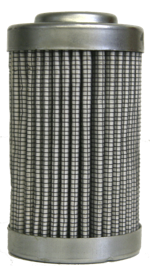Advocates of the 3,000-mile oil change schedule are those who would profit by it.

Do I need to change my oil every 3,000 miles?
No, you don’t, according to every manufacturer we’ve talked to. The main advocates of the 3,000-mile oil change schedule are those who would profit by it: repair facilities, lube chains and service departments at some dealerships.

The ONBOARD® Filter Element.
Years ago it was a good idea to change the oil and filter frequently, but because of advances in engine materials and tighter tolerances, as well as the oil that goes into engines, most manufacturers recommend intervals of 7,500 miles or more.
Some manufacturers, for example, recommend oil changes every 10,000-15,000 miles (with synthetic oil).
Years ago it was a good idea to change the oil and filter frequently, but because of advances in engine materials and tighter tolerances, as well as the oil that goes into engines, most manufacturers recommend intervals of 7,500 miles or more. ONBOARD renders both of philosophies obsolete.
Oil Intervals
The intervals vary by manufacturer and engines, so consult your owner’s manual or maintenance schedule to see how often to change the oil in your vehicle and what type of oil to use. You may be surprised.
Driving Conditions
Manufacturers suggest you change oil more often for “severe” driving conditions, such as frequent trailer towing, extensive stop-go driving or idling in traffic, driving in extreme heat or cold, or frequent short-distance driving in which the engine doesn’t reach full operating temperature.
Some companies equip most vehicles with oil life monitors that tell you when it’s time to change the oil based on vehicle speed, engine temperature, climate conditions, number of cold starts and other factors. They can all cite examples from owners who say the oil-life monitors indicated they could go even longer than the recommended change intervals.
If you’re nervous about going 10,000 miles or more between oil changes, then do it every six months, when you probably should also have your tires rotated (also explained in your owner’s manual). With longer recommended intervals between oil changes, it’s more important to check the oil level at least once a month to make sure you have enough.
But to change oil every 3,000 miles is probably wasting money. Environmentalists say it also adds to the glut of used oil that must be recycled or disposed, and the state of California is trying to discourage the practice.
If the guy at the shop says he’s only trying to help you when he recommends frequent oil changes, consider this: It is not in the interest of a manufacturer for you to suffer premature engine failure caused by worn-out oil. If that happens, they might have to pay for repairs under warranty and probably will lose you as a customer. Yet, they’re the ones advising you to follow longer oil-change intervals.
24-hour clean oil is the goal. Oil analysis is the method. ONBOARD® is the solution.